Building effective plant recognition apps requires a focus on user safety through accurate identification of toxic lookalikes. You'll need robust visual pattern recognition algorithms, clear warning systems, and toxicity classifications integrated with poison control databases. Don't overlook urban-specific challenges like pollution contamination and environmental variations that affect identification. Include community verification features and regular expert audits to enhance reliability. The difference between a helpful foraging tool and a potential health hazard lies in these critical design considerations.
The Life-or-Death Stakes of Accurate Plant Identification
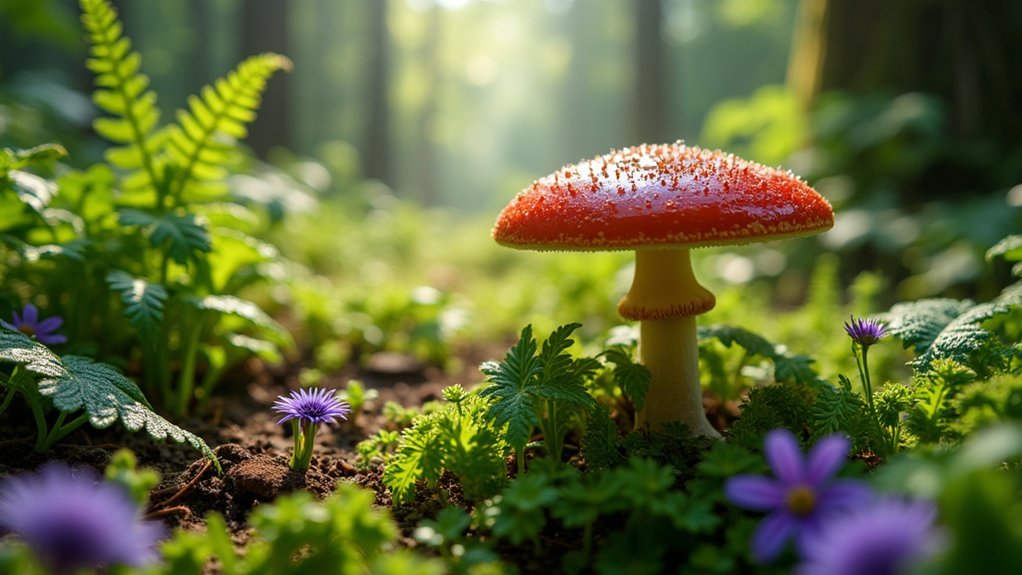
While many people view plant identification as a casual hobby, it actually carries life-or-death consequences in many situations. When you're foraging for wild edibles, mistaking a toxic lookalike for a safe plant can lead to severe poisoning or even death.
You're not just risking your own health—misidentification impacts ecosystems too. By incorrectly identifying plants, you might unknowingly spread invasive species or remove beneficial native ones. This disrupts the delicate ecological balance that wildlife depends on.
Even in your garden, proper identification guarantees you don't accidentally cultivate harmful plants near children or pets. Recognizing distinct leaf characteristics and shapes is crucial for accurately identifying potentially dangerous plants from safe ones.
Remember that plant identification apps can help, but they're not infallible. Always cross-check with multiple reliable sources, especially when dealing with plants you intend to consume or handle.
Why Current Apps Fail Foragers in Urban Environments
Current plant recognition apps often struggle with urban environments where pollution can contaminate edible species, creating dangers that aren't flagged in your identification results.
You'll face particular challenges with lookalike species in cities, where decorative cultivars frequently resemble their edible counterparts but may contain toxic compounds.
Your foraging success depends on understanding these urban-specific limitations, as apps rarely account for local contamination risks or the complex ecosystem of introduced species in metropolitan areas. This problem is particularly evident in areas with high ethnic diversity, where traditional knowledge about safe foraging practices may be diluted or misapplied in unfamiliar urban ecosystems.
Urban-Specific Limitations
Despite their growing popularity, plant identification apps face significant challenges when used by foragers in urban environments. The databases powering these apps typically underrepresent urban flora, with endemic species and non-native landscaping plants often missing entirely.
Environmental factors further compound these issues. Urban pollution can alter plant appearances, while seasonal variations and poor lighting conditions frequently lead to misidentifications. You'll notice that apps struggle particularly with unlobed leaves, which are common in urban settings.
The algorithms themselves introduce limitations. Training data biases favor well-documented species over urban-specific plants, creating dangerous blind spots for foragers. Studies have shown that these apps demonstrate low accuracy rates when identifying rare or unusual plant species.
When you rely exclusively on these apps, you might develop a false sense of security about your identifications. Without expert feedback or community engagement, you're maneuvering urban foraging with an incomplete map.
Lookalike Species Dangers
When foragers rely solely on plant identification apps in urban environments, they face potentially life-threatening dangers from lookalike species. Many toxic plants closely resemble edible ones, creating a deadly identification challenge that current apps aren't equipped to handle.
- Toxic Doppelgangers – Poison hemlock masquerades as wild carrot, while death camas mimics edible wild onions and ramps, leading to severe poisoning when misidentified. Even expert foragers must carefully check for reddish-purple spots on stems to distinguish deadly poison hemlock from edible wild carrot.
- Visual Similarity Traps – Environmental factors and regional variations alter plant appearances, making app-based identification unreliable.
- App Shortcomings – Limited training data and lack of expert oversight result in dangerous misidentifications.
- Fatal Consequences – Ingesting misidentified plants can cause rapid symptom onset, organ failure, and death, with some plant toxins having no effective antidotes.
Pollution Contamination Risks
Beyond the dangers of misidentifying plants, urban foragers face a hidden threat that no app can detect: pollution contamination. Your harvest might be tainted with heavy metals from traffic emissions, industrial runoff, and construction materials without any visible signs.
Pesticides and herbicides like glyphosate, commonly sprayed along sidewalks, remain active long after application. PAHs from vehicle exhausts infiltrate plant tissues, potentially causing metabolic issues and cancer when consumed regularly. Research shows that heavy metals concentrate more heavily in plant roots than in other parts, making certain foraged foods riskier than others.
Even with proper identification, parasites, pathogens, and microplastics may lurk in seemingly healthy specimens. Current apps offer no solution for these invisible dangers, as they can't assess soil quality, measure contamination levels, or warn you about high-pollution areas.
Thorough washing helps reduce surface contaminants, but you'll need soil testing and local knowledge to truly forage safely.
Critical Features for Toxicity Warnings in Plant Recognition Systems
Although plant identification apps have revolutionized how people interact with nature, they require specific critical features to effectively warn users about toxic plants. Current systems operate at around 82% accuracy for genera identification, but species-level accuracy—especially for toxic plants—remains problematic.
- Clear warning systems – Prominent alerts about highly dangerous plants like Aconitum that can cause fatal outcomes when ingested.
- Symptom indicators – Information about toxicity symptoms users should watch for, such as nausea or cardiac issues. The implementation of ambient intelligence in these apps can help create adaptive, personalized warnings based on user location and environmental context.
- Toxidromic classification – Rapid categorization systems to help users understand the severity and type of potential poisoning.
- Integration with medical resources – Direct connections to poison control databases that provide current treatment guidelines and emergency contacts.
Leveraging AI to Differentiate Between Edible and Poisonous Lookalikes
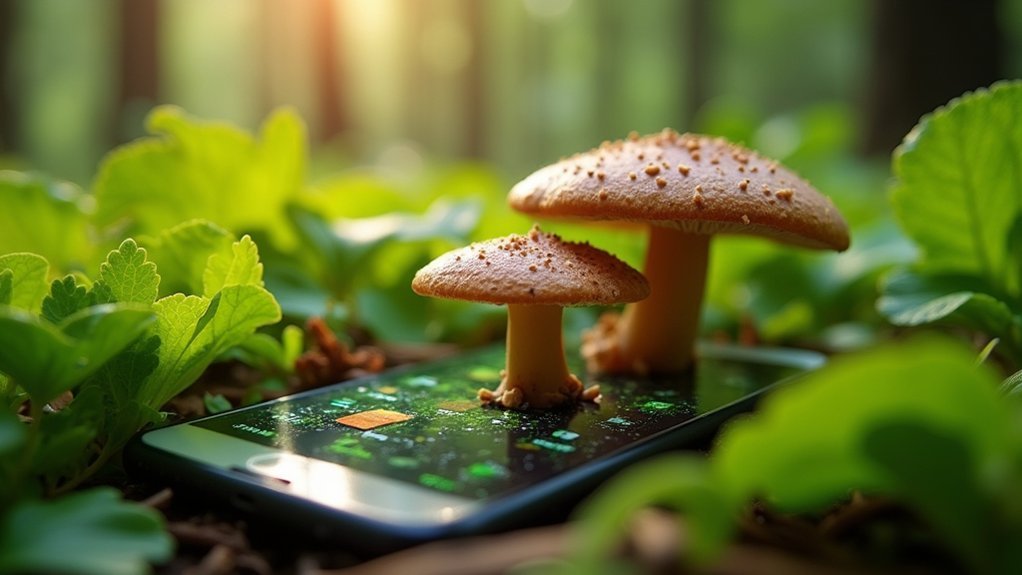
When you're building a plant recognition app, you'll need robust visual pattern recognition algorithms that can identify subtle differences between edible plants and their toxic lookalikes.
Your AI must focus on distinctive features like leaf margins, stem structures, and fruit characteristics that separate safe mushrooms from deadly Amanitas or edible berries from poisonous ones.
The University of Florida research team demonstrated this concept by collecting images that captured the unique leaf arrangement of poison ivy to help their AI differentiate it from similar-looking plants.
Incorporating safety alert systems that flag potential dangers before users make risky foraging decisions will prevent life-threatening misidentifications that even experienced foragers sometimes make.
Visual Pattern Recognition
While many plants share visual similarities, differentiating between edible and poisonous lookalikes requires sophisticated AI technologies that can detect subtle patterns human eyes might miss.
Modern plant recognition apps leverage advanced computer vision techniques to identify important distinguishing features.
When building your plant recognition system, consider these powerful technologies:
- Convolutional Neural Networks (CNNs) – Analyze texture, color, and shape patterns with deep learning capabilities
- Vision Transformers (ViT) – Provide superior accuracy for complex classification challenges
- Transfer Learning – Utilize pre-trained models like ResNet50 or MobileNetv2 to accelerate development with limited data
- Data Augmentation – Enhance training datasets to improve identification reliability across various environmental conditions
Remember that combining AI with botanical expertise remains essential, as misidentification risks can have serious consequences. Despite technological advances, current AI systems still lack the capability to reliably emulate real-world mushroom identification skills that experienced foragers possess.
Safety Alert Systems
Because the difference between safe and toxic plants can be a matter of life or death, modern plant recognition apps must integrate robust safety alert systems.
You'll benefit from AI technology that accurately differentiates between edible plants and their poisonous lookalikes in real-time.
These systems process visual data instantly, triggering immediate warnings when potentially dangerous species are identified. Unlike traditional reference guides, AI-powered solutions continuously learn from new data, improving their recognition accuracy over time. Advanced camera systems leverage computer vision technology to analyze subtle differences in leaf patterns, stem structures, and fruit characteristics that humans might overlook.
Your app should include customizable alert levels based on toxicity risks, with emergency response information for accidental ingestion.
The most effective systems integrate machine learning algorithms that analyze specific visual patterns unique to toxic varieties, reducing false identifications that could lead to dangerous foraging mistakes.
Designing Visual Cues and Warning Systems for Novice Urban Foragers
As urban foraging grows in popularity, effective visual cues and warning systems have become essential components of plant recognition apps.
You'll find that well-designed visual elements can prevent potentially deadly mistakes while fostering confidence in new foragers.
- Color-coded threat indicators immediately signal danger, with red highlighting toxic plants and green confirming safe options.
- High-resolution plant images with interactive overlays that point out distinguishing features between similar safe and poisonous species.
- Real-time scanning capabilities that deliver instant alerts when dangerous plants are detected, complete with concise explanations of risks.
- Gamified learning elements that test and reinforce your knowledge of poisonous plants through interactive quizzes and simulated foraging exercises.
Like flies using social information to detect threats, urban foragers can benefit from apps that incorporate social learning features showing how others identify safe plants in their community.
Community Verification: Crowdsourcing Safety Checks for Plant Identification
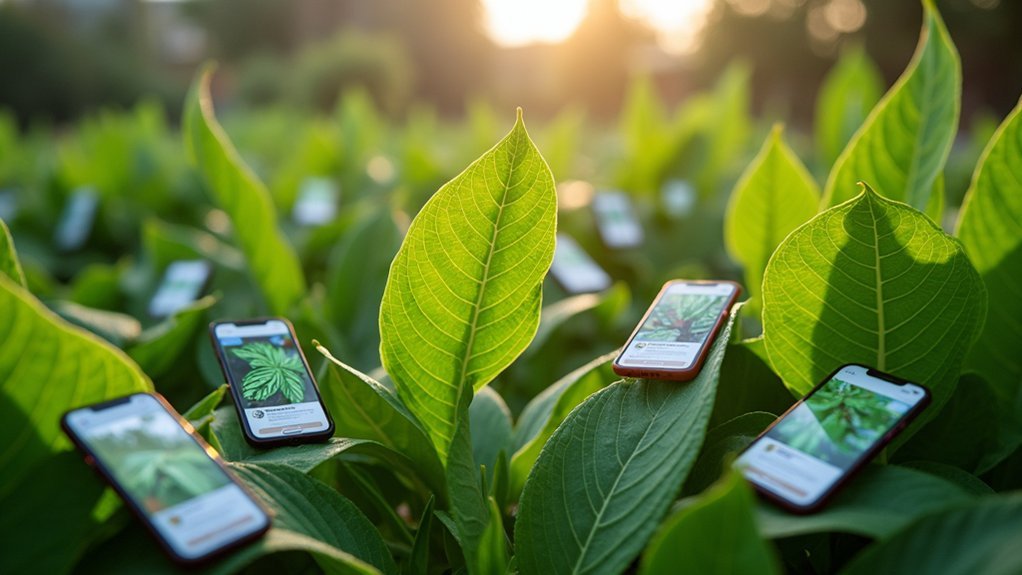
Since even advanced AI can occasionally misidentify plants, community verification systems provide a critical safety net for foragers relying on plant recognition apps. Platforms like iNaturalist and PlantSnap leverage global networks of enthusiasts and experts to verify identifications, greatly enhancing accuracy.
You'll benefit from diverse expertise when using community-driven platforms, as both amateur and professional botanists contribute their knowledge. This approach creates essential safety nets for potentially poisonous plant identifications.
The most successful models, like iNaturalist's Community Science, maintain consistent engagement while balancing user autonomy with quality control. Apps like Flora Incognita provide detailed botanical information that can further support accurate identification of potentially dangerous plants.
When selecting a plant identification app, look for those with robust crowdsourcing features that encourage users to double-check dangerous species. Though challenges like data quality control exist, the collective wisdom of many observers typically outperforms isolated AI decisions.
Seasonal Variations and Their Impact on Toxic Plant Recognition
Seasonal changes present a significant challenge for plant recognition technologies that community verification alone can't solve.
Plants undergo dramatic morphological shifts throughout the year, with toxic species like poison ivy changing leaf color and many dangerous plants only flowering during specific seasons.
When building plant recognition apps, you'll need to address these seasonal hurdles:
- Spring dangers – Early-season growth of toxic plants like larkspurs coincides with scarce alternative forage for animals and foragers.
- Summer transformations – Flowering toxic plants like giant hogweed become more identifiable but also more dangerous.
- Fall seed toxicity – Seeds and pods often contain concentrated toxins and become more accessible as plants die back. The Japanese Yew shows higher toxicity levels at year-end due to toxin accumulation, representing a critical identification priority during this season.
- Winter identification gaps – Dormant plants lack distinctive features, making toxic species harder to distinguish.
Your app should incorporate seasonal data to maintain accuracy year-round.
Regulatory Compliance and Legal Considerations for Foraging App Developers
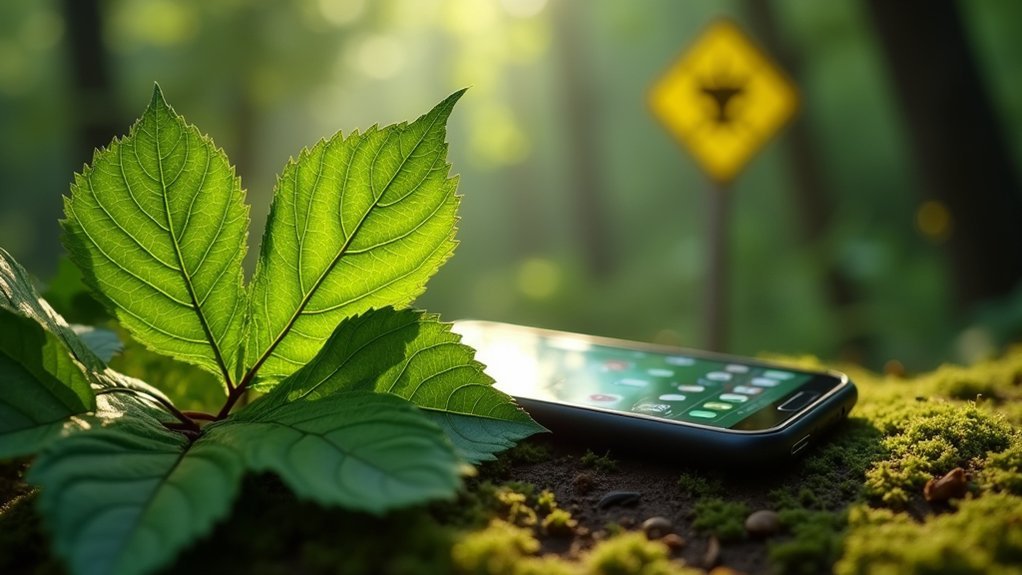
Developing plant recognition apps with foraging features requires careful navigation of complex legal landscapes that vary dramatically across regions.
You'll need to incorporate location-specific information since foraging laws differ across national parks, state lands, and private property.
Ensure your app includes prominent disclaimers about identification limitations and emphasizes obtaining proper permissions before foraging.
Prioritize data accuracy in your plant database to prevent potentially dangerous misidentifications.
Beyond technical features, your app should educate users about sustainable harvesting practices, respect for indigenous rights, and environmental contamination risks.
Consider implementing geofencing that alerts users when they're in protected areas where foraging is restricted.
Remember that you may face liability issues if users misuse your app, so consult legal experts familiar with both technology and environmental regulations during development.
Your app should include detailed botanical terminology and visual guides to help users understand leaf arrangements and other plant structures critical for accurate identification.
Testing Protocols to Ensure Life-Saving Accuracy in Plant Recognition Apps
While regulatory compliance addresses the legal framework of plant recognition apps, the accuracy of these applications can mean the difference between life and death when users encounter potentially toxic species.
Your testing protocols must be rigorous and thorough to guarantee reliable plant identification.
- Conduct controlled testing with known species, particularly focusing on toxic plants where PictureThis has demonstrated 59% accuracy—still not high enough for medical reliability.
- Implement multiple image analysis from different perspectives to improve identification rates.
- Establish expert verification systems especially for potentially dangerous species identification.
- Test across diverse regions to account for regional variations and guarantee your app maintains accuracy regardless of user location.
Testing should involve a comprehensive database of at least 234 images of various plant species, as this was the standard methodology used in comparative app testing.
Don't rely solely on AI—incorporate human expert validation, particularly for toxic species identification.
Frequently Asked Questions
Can Plant Identification Apps Work Without an Internet Connection?
Yes, some plant identification apps like Pl@ntNet, Flora Incognita, and PlantID offer offline modes. They use pre-downloaded machine learning models, though these may be less accurate than their online counterparts.
How Often Are Plant Databases Updated With New Species?
Plant databases are typically updated every few months, though new species' integration varies. You'll find that about 200 new species are described annually in diverse regions, with updates depending on taxonomic verification processes.
What Qualifications Do Experts Verifying App Identifications Typically Have?
Experts verifying plant identifications in apps typically hold botany degrees, possess FISC level 4-5 certifications, and have extensive field experience. You'll find they've worked in conservation, research, or consultancy roles for years.
How Do Apps Perform With Partially Visible or Damaged Plants?
Apps struggle with partially visible or damaged plants. You'll get more accurate results when you provide clear, complete images. Most platforms can't reliably identify plants missing key features like flowers, leaves, or stems.
Are There Subscription Costs for Accessing Premium Identification Features?
Yes, you'll find most plant identification apps offer premium features through subscriptions. Costs typically range from $7-50 depending on whether you choose monthly, annual, or lifetime plans. Free alternatives like PlantNet exist too.
In Summary
You've learned how critical reliable plant recognition technology is for urban foragers. As you build your app, prioritize safety features, lookalike warnings, and seasonal variations. Don't forget to implement community verification systems and rigorous testing protocols. Remember, your code isn't just creating convenience—it's potentially saving lives. By addressing these challenges, you'll develop technology that empowers safe, confident urban foraging for everyone.

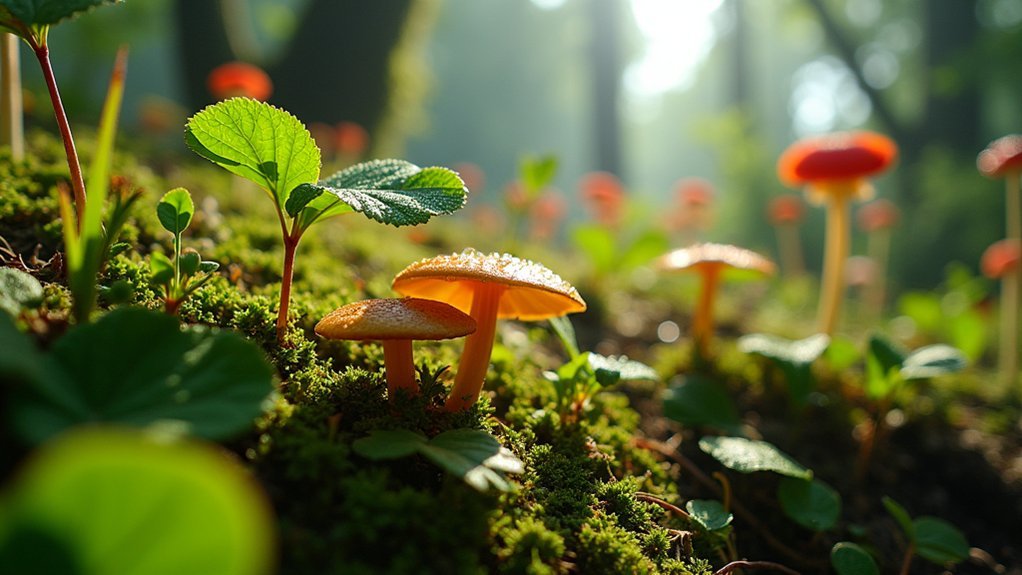



Leave a Reply